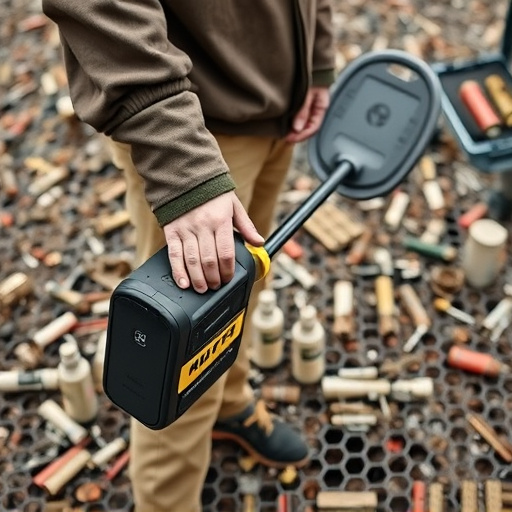Handheld metal detectors are versatile tools used in various fields for locating buried metals, operating on electromagnetic induction principles. They offer swift and accurate detection of metallic objects hidden beneath surfaces, enhancing efficiency in search processes across security screening, treasure hunting, archaeology, construction sites, museums, and event venues. Choosing the right detector requires evaluating specific needs, environment, and preferred features like weight, technology, design, depth, range, digital readouts, displays, and sensitivity settings.
“Uncover hidden treasures with the power of a handheld metal detector—a versatile tool that’s transforming various industries. In this comprehensive guide, we delve into the world of these innovative devices. From their underlying technology to diverse applications, you’ll explore how handheld metal detectors are revolutionizing security and archaeology.
Learn about their benefits, discover different models, and find the perfect fit for your needs. Whether it’s for personal safety or treasure hunting, this article is your key to understanding and choosing the right handheld metal detector.”
Understanding Handheld Metal Detectors: A Comprehensive Guide
Handheld metal detectors are portable devices designed to locate and identify metallic objects buried beneath the surface. They have become a popular choice for various applications, from treasure hunting and archaeological excavations to security screening and industrial inspections. Understanding how these detectors work is essential for maximizing their effectiveness.
At their core, handheld metal detectors utilize electromagnetic induction to detect metal. When an alternating current passes through a coil, it generates a magnetic field around it. If a conductive metal object is within this field, the detector’s coil induces an electric current in the metal, which is then detected by the device’s sensors. This process allows the detector to pinpoint the location and approximate depth of metallic objects, providing users with valuable insights beneath the surface.
The Applications and Benefits of Using Handheld Metal Detectors
Handheld metal detectors offer a wide range of applications across various industries, making them invaluable tools for safety and security. From security screening at public events and airports to treasure hunting and historical archaeology, these devices have become indispensable. One of their key benefits is the ability to swiftly and accurately detect metallic objects hidden beneath surfaces, enhancing efficiency in searches.
In settings like construction sites, museums, or event venues, handheld metal detectors ensure a thorough inspection process. They are particularly useful for identifying potentially dangerous items like weapons, helping to maintain safe environments. Additionally, these detectors play a crucial role in historical research and treasure hunting, allowing experts to uncover artifacts and relive the past without causing damage.
Choosing the Right Handheld Metal Detector for Your Needs
Choosing the right handheld metal detector depends on your specific needs and preferences. Consider the type of environment you’ll be searching in, such as beaches, parks, or historical sites, as different locations may require distinct features. For instance, a lightweight model with a sensitive PI (Pulse Induction) sensor might be ideal for hiking and treasure hunting, while a more robust detector with an open-air design and discriminating capabilities would better suit metal detecting in highly contaminated areas like construction sites or old landfills.
Additionally, look into the detection depth and range, as these factors vary between models. Deeper penetration is beneficial for locating deeply buried items, but it’s essential to balance this with the convenience of a shorter detection range for cluttered environments. Features like digital readouts, backlit displays, and adjustable sensitivity settings also contribute to user experience and the overall effectiveness of the metal detector.
